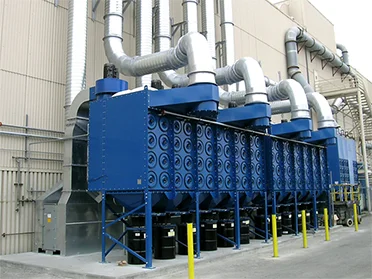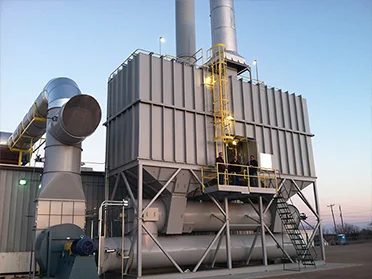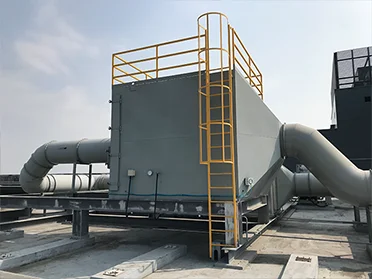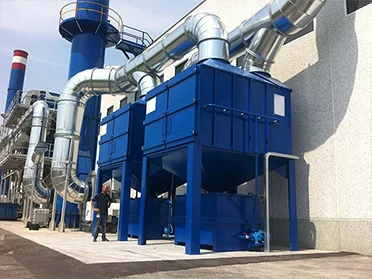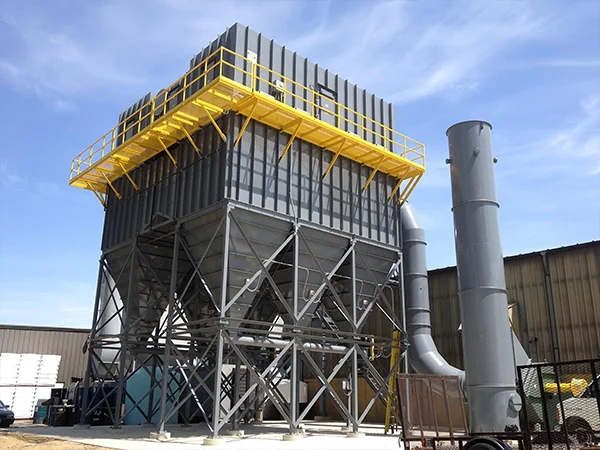Pulse-Jet Baghouse
The pulse-jet baghouse uses compressed air to produce a strong, instantaneous pulse airflow for reverse-jet cleaning of the filter bags. This type of dust collector achieves thorough cleaning and high efficiency, making widely used in industrial dust control applications involving high dust concentrations, large air volumes, and continuous operation.
Working Principle
After dust-laden gas enters the housing, coarse particles settle naturally, while fine dust is captured on the outer surface of the filter bags. As filtration time increases, the resistance of the filter bag rises. The control system, triggered by either a timer or a pressure differential, opens the pulse valves, allowing compressed air to pass through the blow pipes into the filter bags. This creates a high-speed airflow that instantly expands the bags, shaking off the dust attached to their surfaces.
Applications
- Cement plants (kiln inlet/outlet, mills)
- Thermal power plants (boiler flue dust)
- Chemical, steel, metallurgy, foundry, and mining industries
- High-dust conditions such as bulk material handling and packaging
Shaker Baghouse
The shaker baghouse is a traditional type of dust collector that uses a mechanical vibration system to periodically clean the filter bags. Featuring a simple structure and stable operation, it is suitable for applications with low air volume and intermittent operation.
Working Principle
Dust-laden gas enters the dust collector, where particles are captured on the surface of the filter bags. As dust accumulates over time, resistance increases. The system then activates a shaker mechanism to vibrate the filter bags at regular intervals, dislodging the dust into the hopper below.
Applications
- Woodworking, furniture manufacturing
- Food, pharmaceutical, and light industries
- Small-scale packaging and material transfer stations
- Operating conditions requiring intermittent operation or frequent manual intervention
Reverse Air Baghouse
The reverse air baghouse uses low-pressure, high-volume reverse airflow to clean the filter bags. It is suitable for applications involving large air volumes, low filtration velocities, and long filter bag service life requirements, and is commonly used in early boiler dust collection and large-scale industrial systems.
Working Principle
Dust-laden gas enters the filter bag from the outside, where dust accumulates on the inner surface of the filter bags. During cleaning, one chamber is switched 'reverse air mode,' and the fan sends air through the ductwork into the bags in the opposite direction. This causes the bags to inflate and deform, dislodging the dust layer through the combined action of reverse airflow and gravity into the hopper. After cleaning, the chamber returns to filtration mode.
Applications
- Boiler flue gas dust control in thermal power plants
- Large cement, metallurgy, and steel plants
- High-temperature flue gas dust collection systems
- Applications requiring long filter bags and low filtration velocity







